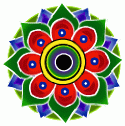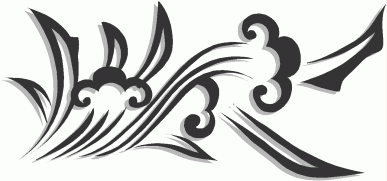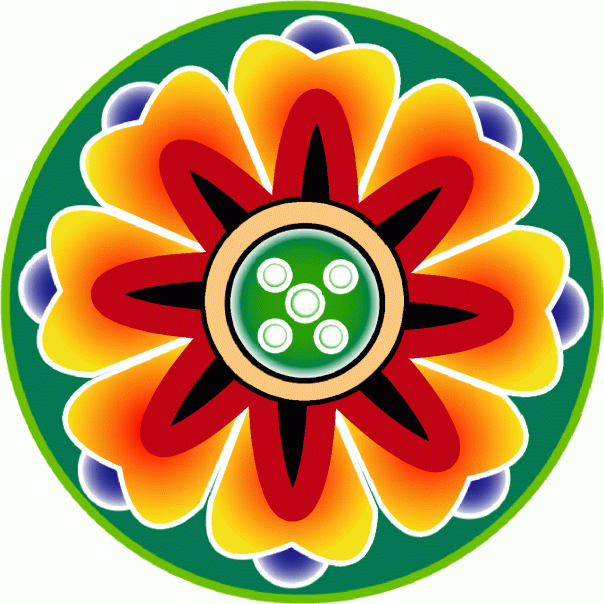|
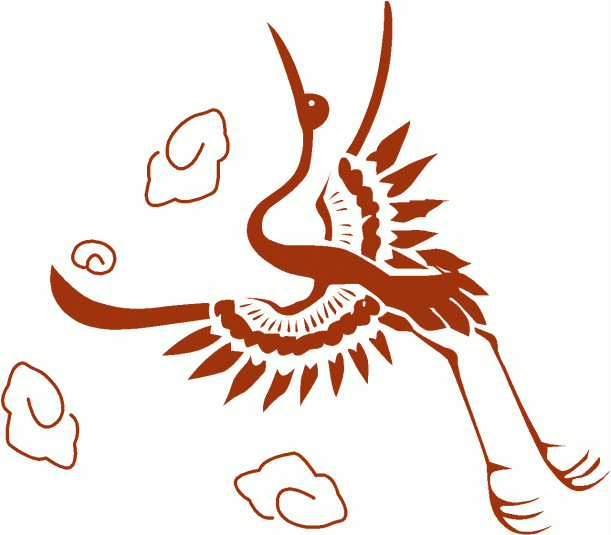
|
The
Life of Christ in Icons
St.
Paul’s Orthodox Church, Incheon, Republic of Korea
Written by Mr. Basil Berck
The icons adorning the walls around the nave and narthex are
a mix of Russian and Byzantine and through various periods. This mixture reflects the makeup of the
Church in Incheon. Orthodox Christians
and seekers from all around the world, of all ages and backgrounds, find
themselves accepted and reflected in the body of Christ located at St. Paul’s
Orthodox Church in Incheon, Republic of Korea.
|
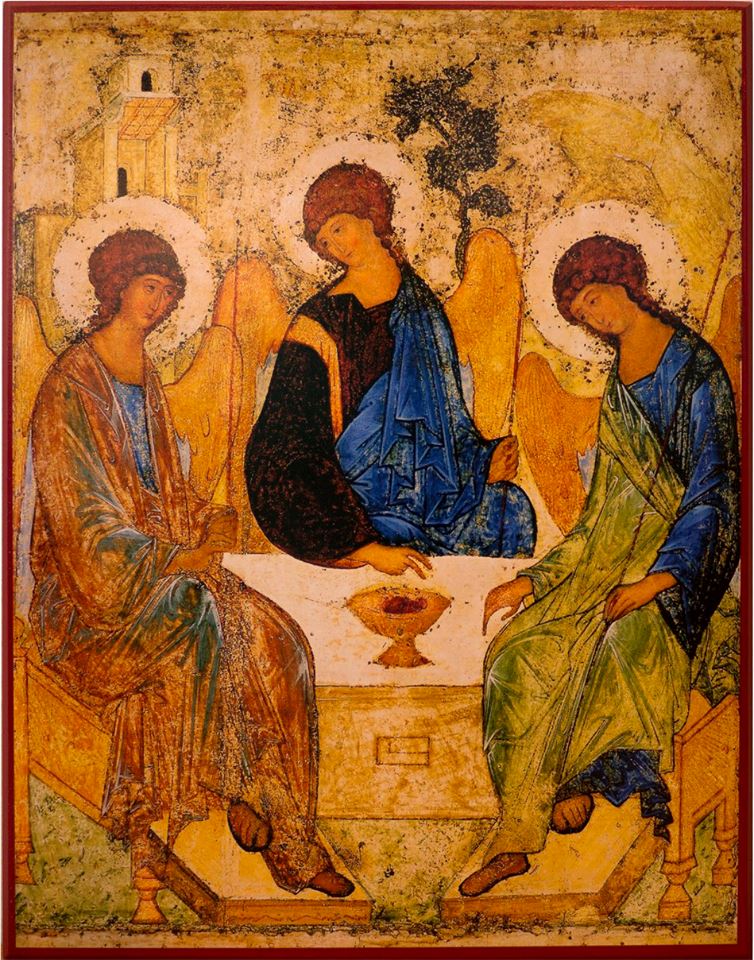
|
|
Holy Trinity
(Russian, 14th Century)
By Andrei Rublev (1370-1430), Moscow
Scripture: Genesis 18
This icon depicts the account of the three angels appearing
to Abraham and Sarah, known as the Hospitality of Abraham. This is traditionally thought of as an Old
Testament prefiguration of the Trinity.
The Church specifically chose this particular icon because
it most fully expresses the dogma of the Holy Trinity: the three angels are
depicted in equal dignity, with the same faces symbolizing the triunity and
equality of all three Persons. While
they are of the same nature or essence, they are yet distinct persons which is
depicted in the differing garments. The
central angel, the one who speaks, is associated with Christ, and his robes are
colored the same as Christ's in iconography.
|
|
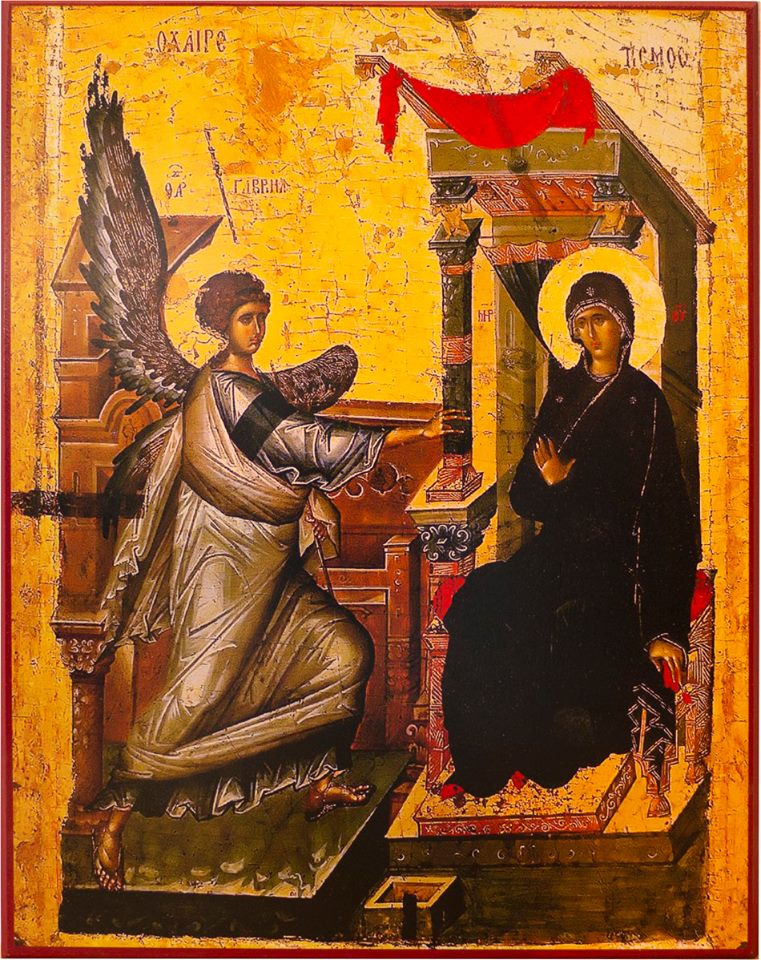
|
Annunciation
(Byzantine, 14th Century)
Church of St.
Clement in Ohrid, Macedonia.
Scripture: Luke 1:26-38
This icon depicts
the Archangel Gabriel bringing the news of the news of Christ's Incarnation.
The Virgin Mary receives the news with surprise, but at her amen, the Holy
Spirit descended upon her. This is the moment at which she became the
Theotokos.
|
|
Nativity
(Byzantine, 15th Century)
Scripture: Luke 2:6-20
This icon
portrays the nativity of our God and Savior Jesus Christ…God coming into the
world in the flesh. Some of the imagery
depicted are the Star of Bethlehem (portrayed as the Holy Spirit), the angels
proclaiming the good news of great joy, Magi (left), and a shepherd (right),
Saint Joseph being tempted by the Devil (portrayed as an old man), and two
women bathing the newborn Christ (testifying to His humanity). In the center is
the cave in which rests the Theotokos with Christ lying in the manger. Christ the baby is wrapped in funeral
garments reminding us Jesus came to Earth ultimately to submit to death and
break its hold on humanity.
|
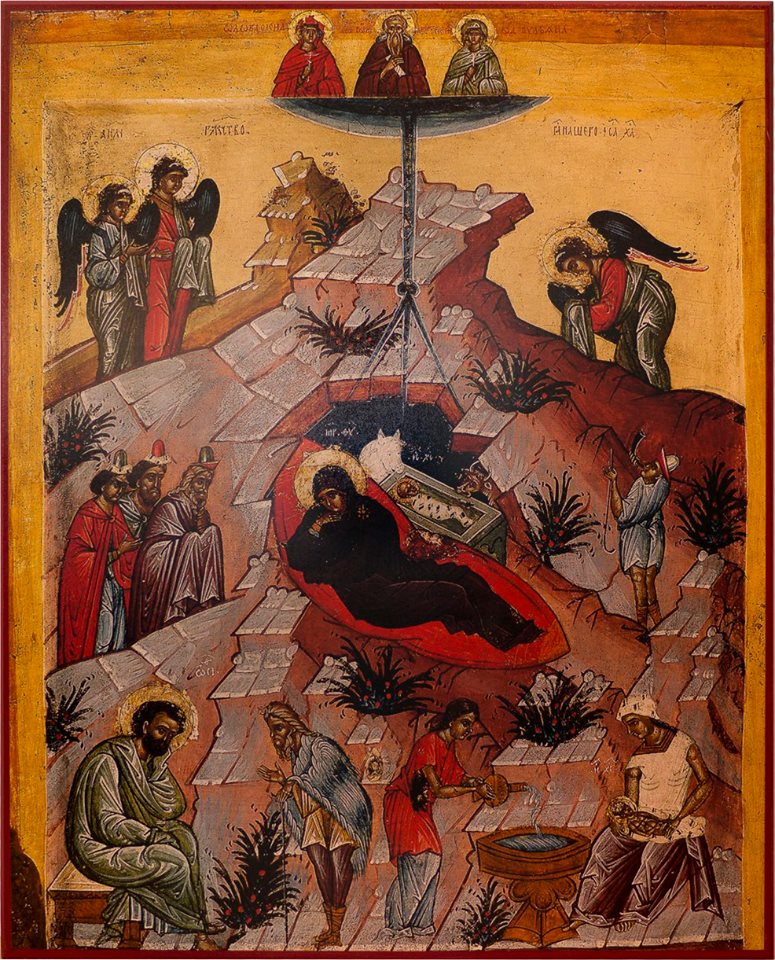
|
|
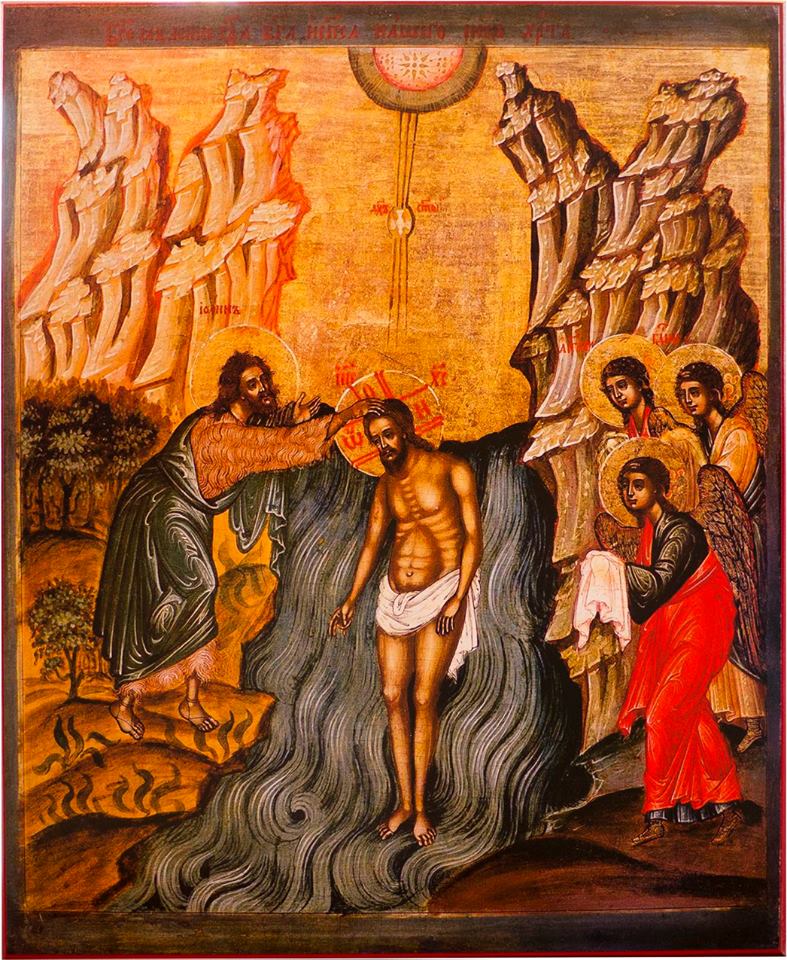
|
Theophany
(Russian, 17th Century)
Scripture: Matthew
3:13-17
This icon depicts John the Forerunner baptizing Jesus
Christ. It was on this day, God revealed
himself in three persons: Father, Son, and Holy Spirit.
This icon depicts that Jesus, not submerged, is not the one
being baptized, but it is creation being baptized in him. He is nearly naked (older icons completely naked),
representing the goodness of God’s creation and as the new Adam, not
ashamed. Early Christians were likewise
baptized naked. Additionally, depicted
is the Holy Spirit descending upon Jesus as a dove and the angels waiting to
attend and dress him after the baptism is over.
|
|
Wedding at Cana
(Byzantine,16th Centuray)
Stavronikita Monastery at Mt. Athos
Scripture: John 2:1-11
This icon depicts Christ's first public miracle, the
changing of water into wine at the request of his Mother. This was the first of
his signs and it revealed his glory and his disciples believed in him. Of note, while in this icon, the Bride is
crowned, the Groom lacks a crown to emphasis that Jesus Christ is the
Bridegroom uniting himself to Creation.
|
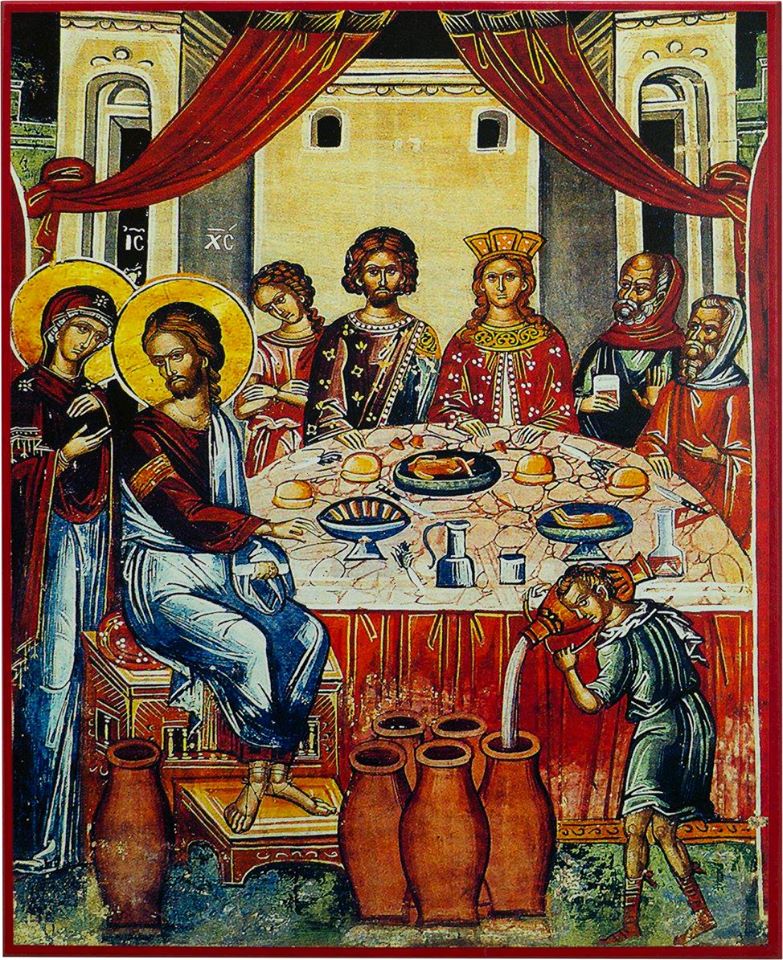
|
|
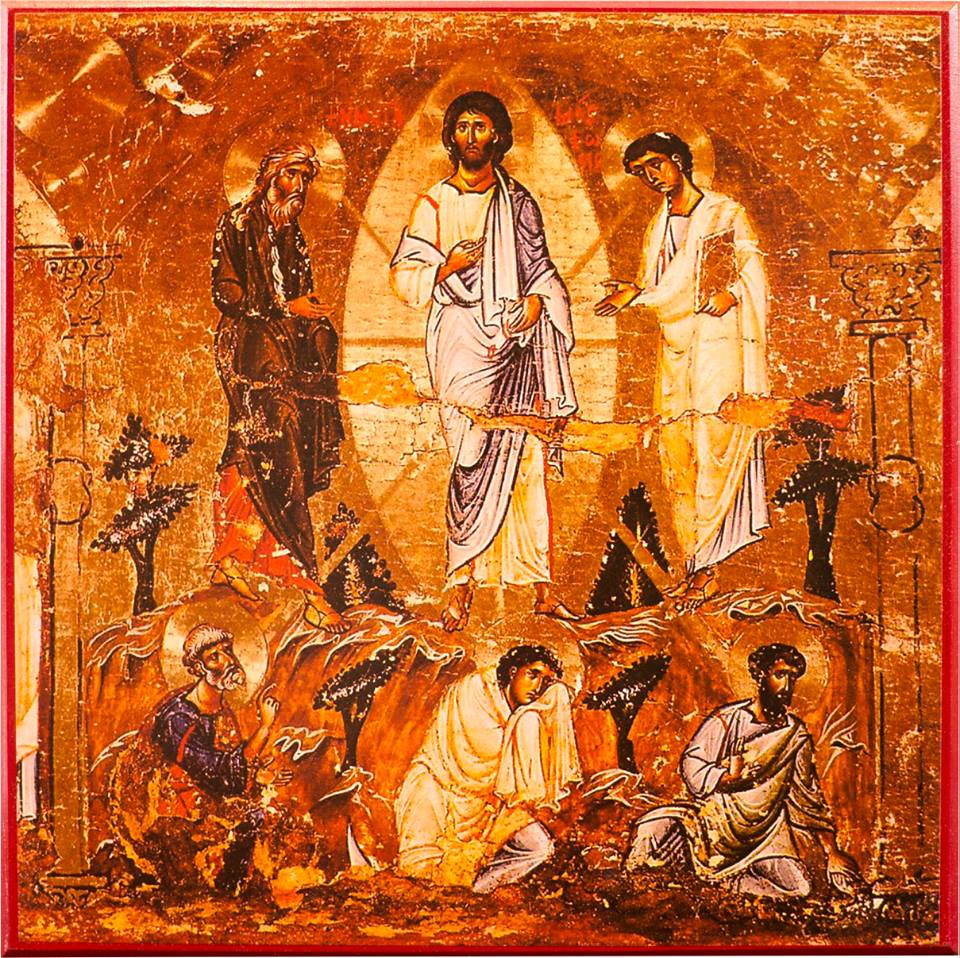
|
Transfiguration
(Byzantine, 12th
Century)
Monastery of Saint Catherine
at Mount Sinai
Scripture: Matthew
17:1-13
Christ is the
center and focus of the image, his hand held in a blessing, eyes directed at
us. His clothes are depicted “white as light” as the Gospel writers describe, and
the glory of God overshadowing the scene is shown by the mandorla around his
body. From His body, shafts of light are shown striking each of the five others
present: to Christ’s right, the Prophet Elijah; to His left Moses; scattered
about His feet in confusion, the Apostles John, Peter, and James.
|
|
Mystical Last Supper
(Byzantine,
12th Century)
Monastery of Vatopedi at Mt. Athos
Scripture: Matthew
26:17-30
This icon depicts
the last meal Christ shared with his disciples before his crucifixion and
resurrection. It is known as the last
supper or mystical supper. This icon is
typically found above the iconostasis to remind us that it was at this meal
that Jesus instituted the mystery of communion and his words of institution are
read at every liturgy. In this icon Peter
is at the right hand of Christ while John, in an image of close friendship,
leans upon His chest. It is Judas who asserts
himself and reaches in to take on his own what has not yet been offered.
|
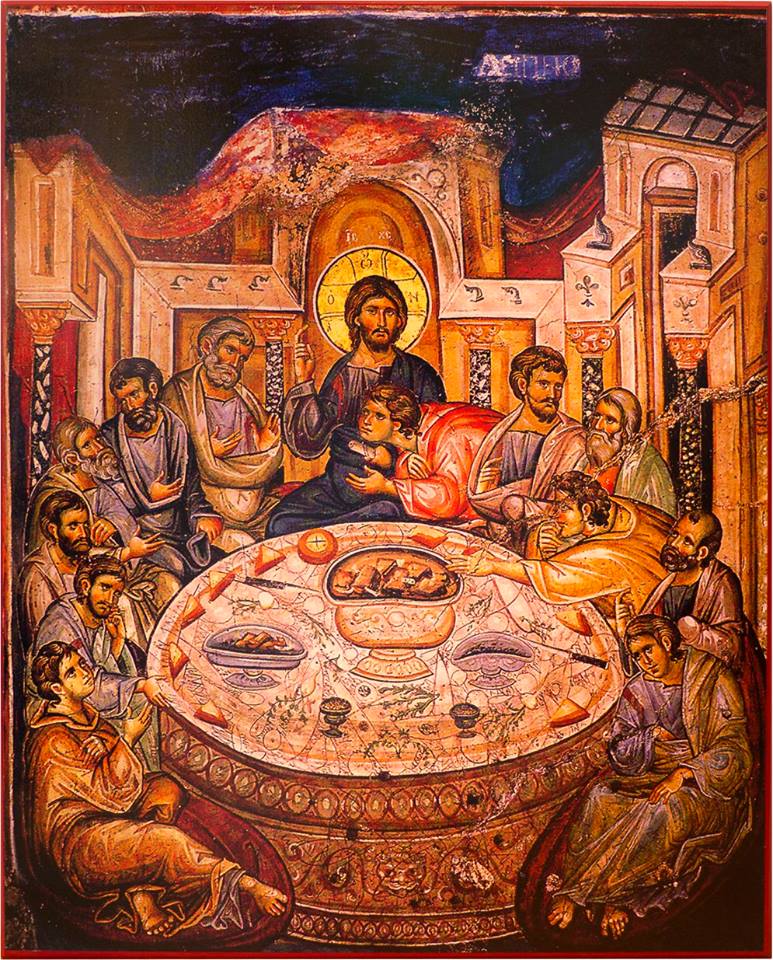
|
|
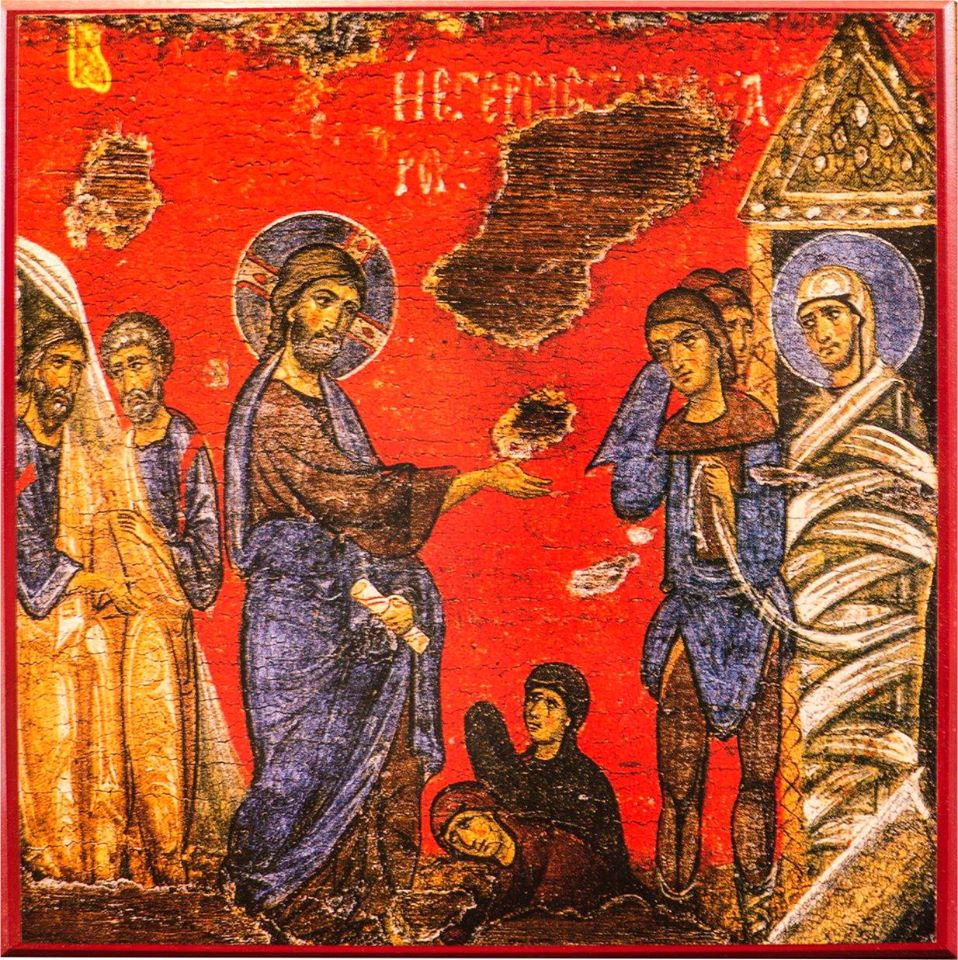
|
Raising of Lazarus
(Byzantine, 12th
Century)
Scripture: John
11:1-44
In this icon, we
see Christ extending his hand to his beloved friend Lazarus, who comes out of
his tomb after being dead for four days. This miraculous event happened just before
Palm Sunday. By this action, Christ displayed his power over death and pointed
to his own Death and Resurrection, which would happen a week later.
|
|
Crucifixion
(Russian, 17th
Century)
Scripture: Luke
23:26-47
This icon of the
crucifixion portrays the physical reality of Jesus Christ’s sacrifice upon the
Cross by a method of execution used by the Romans. There is so much imagery in
this icon that illustrates the effect of the events on the earthly and heavenly
realms as well as hades. Just some of
the imagery includes Jesus nailed to the cross with his crime, “King of the
Jews”, ironically meant as ridicule, hanging over his head. Two criminals are on either side of Jesus;
one insults him while other defends him and is promised to be with Jesus in
Paradise. As Jesus gives up his Spirit,
Angels come to aid him and the sun is darkened and the moon turns red (Joel
2:31). Women disciples and St. John stand nearby while the guard pierces Jesus’
side and water mixed with blood pours forth.
Also of note is that even depicted in death, Jesus retains a halo
illustrating that even in physical death his divinity has not departed.
|
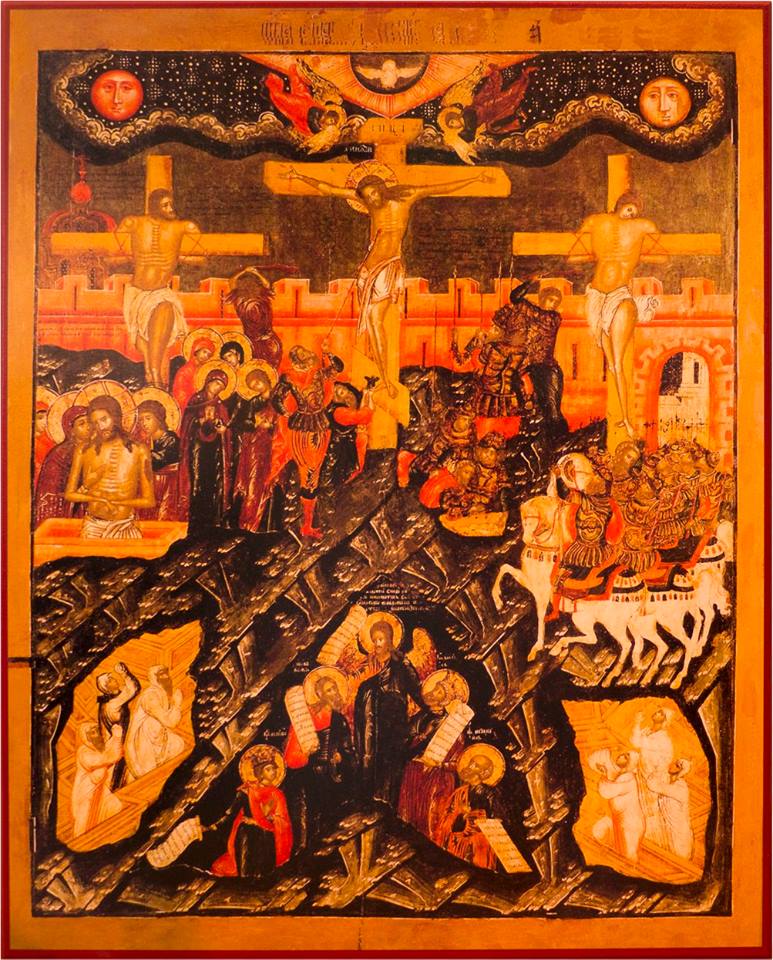
|
|
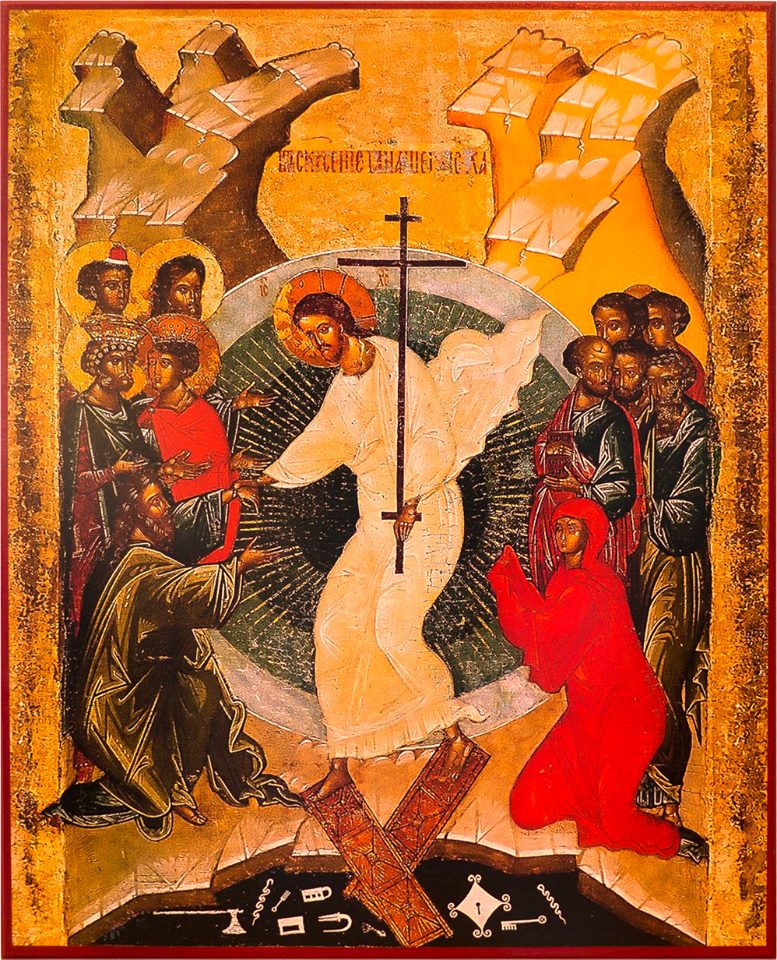
|
Harrowing of Hades
(Russian, 15th
Century)
Church of the Dormition at Volotovo Pole
Scripture: John 5:28;
1Corinthians 15:21,22
We come to the pinnacle
of the Christian faith. This is one of
the icons that represent the Great and Holy Pascha and the one we affirm every
year as we celebrate Jesus’ victory with the Paschal Hymn:
Christ is risen
from the dead,
Trampling down death by death,
And upon those in the tombs bestowing life!
In the Icon, the
victorious Jesus Christ is in the center, surrounded by a mandorla,
representing the Glory of God. He is pulling
the first man Adam from the tomb by his wrist, depicting that there is nothing
Adam can do to be saved but surrender.
Eve is on Christ’s left, depicted in supplication and surrounding
Jesus are John the Baptist and the Old Testament
Righteous who were awaiting the Messiah and are now freed. Hades, under Christ’s crucifixion marked feet, is in shambles with the doors and locks
broken forevermore unable to bind.
|
|
Ascension
(Russian, 15th Century)
Scripture: Acts 1:9-11
Following 40 days
on earth after his resurrection, Jesus ascended into heaven with a promise to
send the Holy Spirit. This icon depicts
that ascension with the angels accompanying Jesus, surrounded by a mandorla, to
Heaven. As would be expected, the
disciples who were with him are shown in confusion and disarray. As told in Acts, Angels assure the Apostles
that Jesus will return in the same manner as they saw him depart. The Theotokos stands between the angels, not
looking up as the Apostles, but at us.
She is peaceful as overshadowed by the Holy Spirit since Christ’s
conception; she has already pondered the mysteries of her son and is already
hoping on his return. She,the angels and
Jesus have halos, but the Apostles yet do not.
|
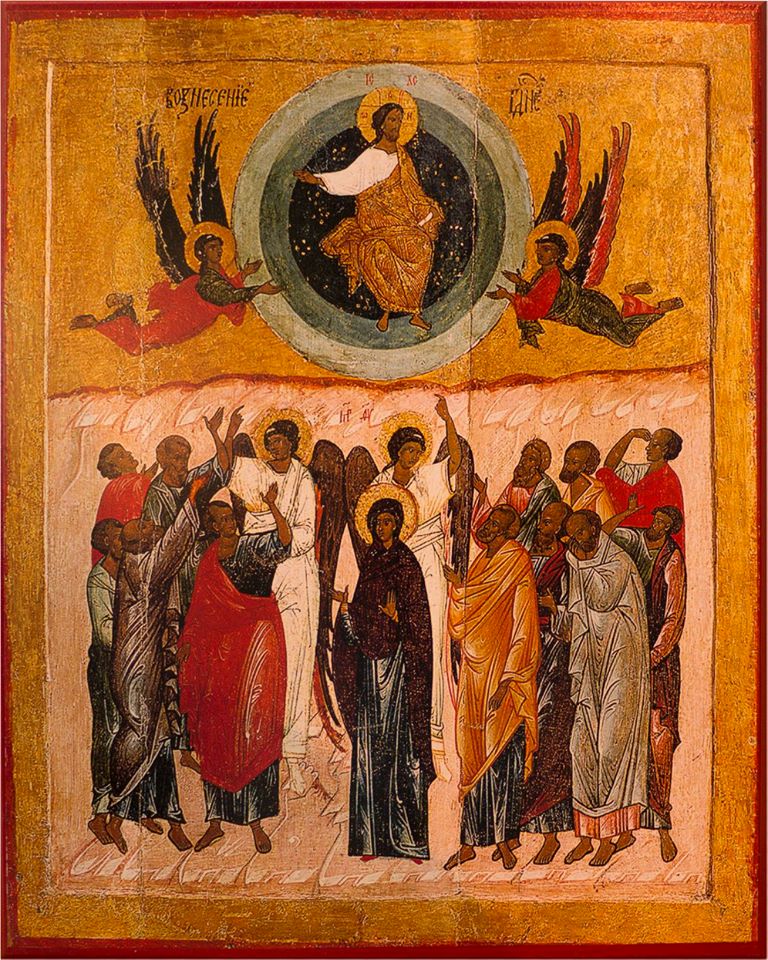
|
|
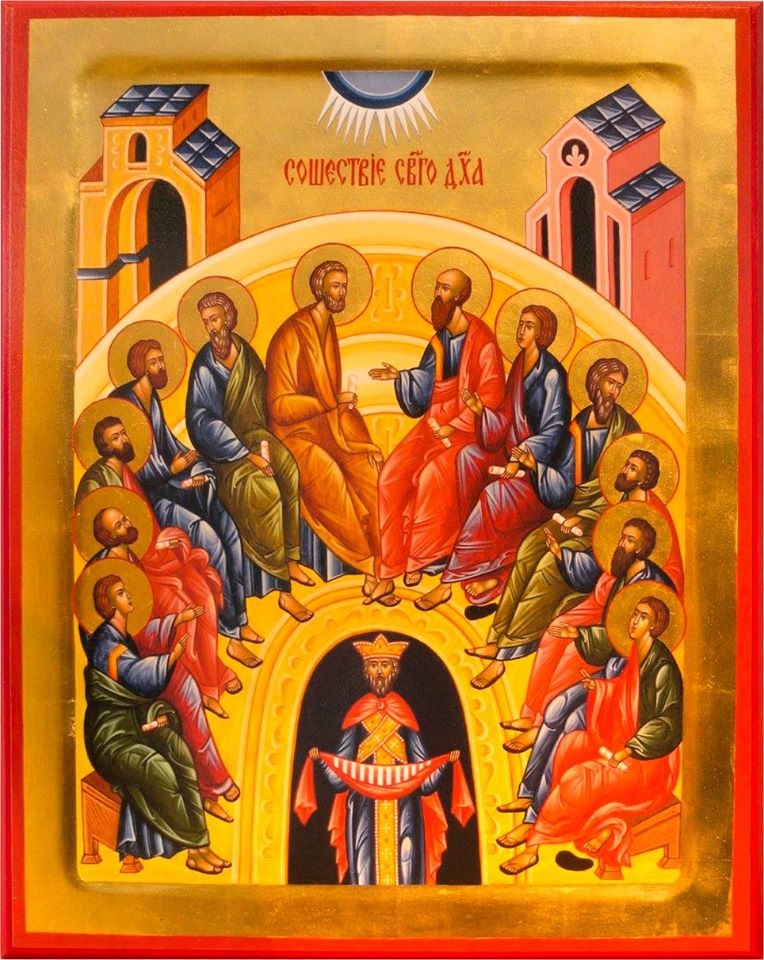
|
|
Pentecost
(Post-Byzantine, 16th
Century)
Stavronikita Monastery on Mt. Athos
Scripture: Acts 2:1-4
This icon depicts the receiving of the Holy Spirit by the
Apostles fifty days after the Resurrection.
At the top the tongues of fire are shown descending on the disciples to fill
them with the Holy Spirit. The disciples
depicted are not the twelve who were historically present, but represent the
Church and include the four Evangelists holding the yet unwritten gospels and
Paul who would carry the Good News to the Gentiles. The disciples sit in a semi-circle
representing the unity of the Church. In
contrast to the confusion at the ascension, they now sit orderly as the Holy
Spirit infuses them with the gifts. The
area in the center of the disciples is empty signifying that the invisible
Christ is the only leader and head of the Church. At the bottom is a figure representing the
kings of this world still in darkness, while the Disciples are illumined above.
|
|
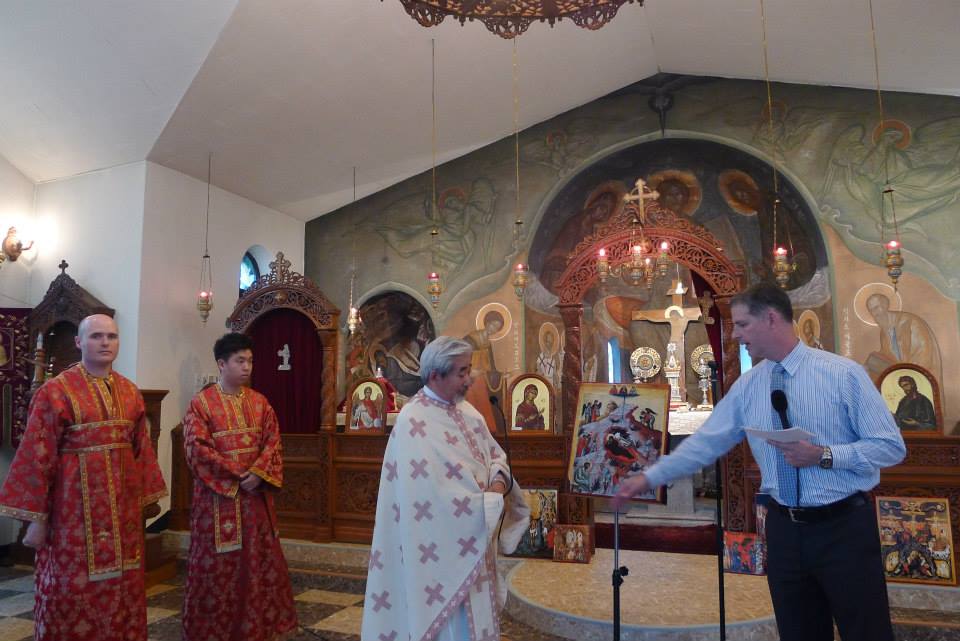
|
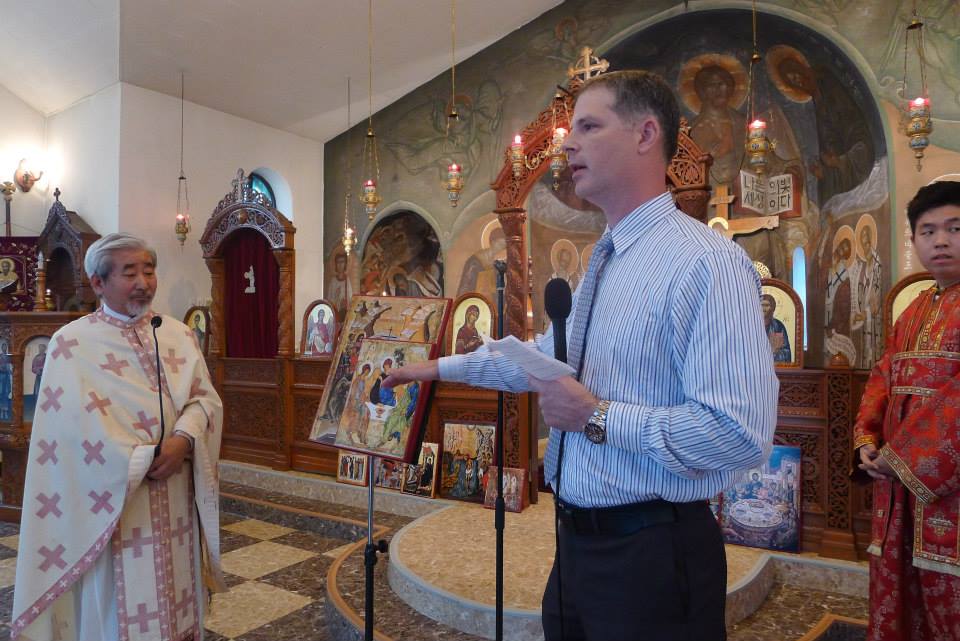
|
|
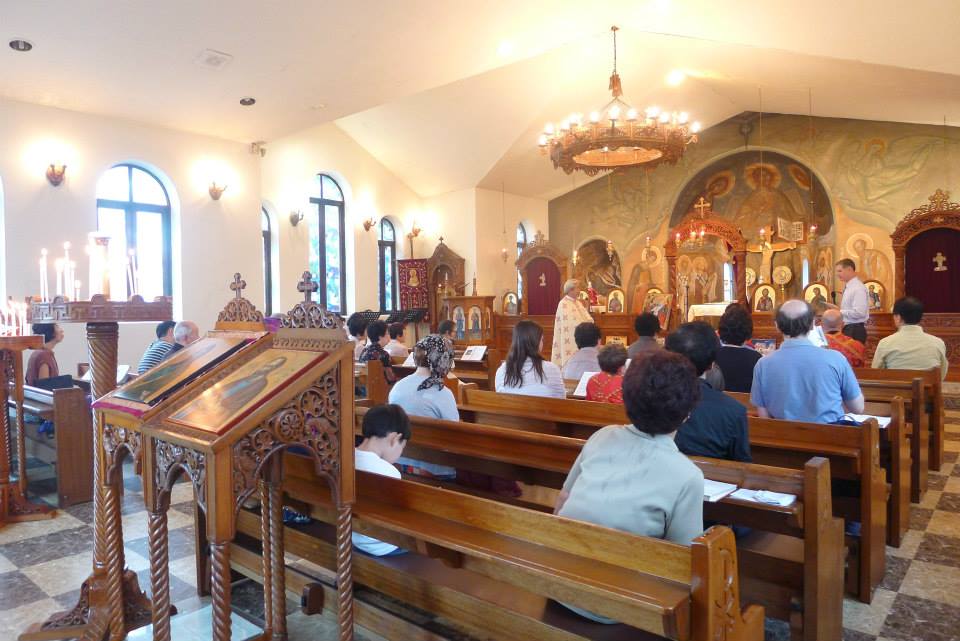
|
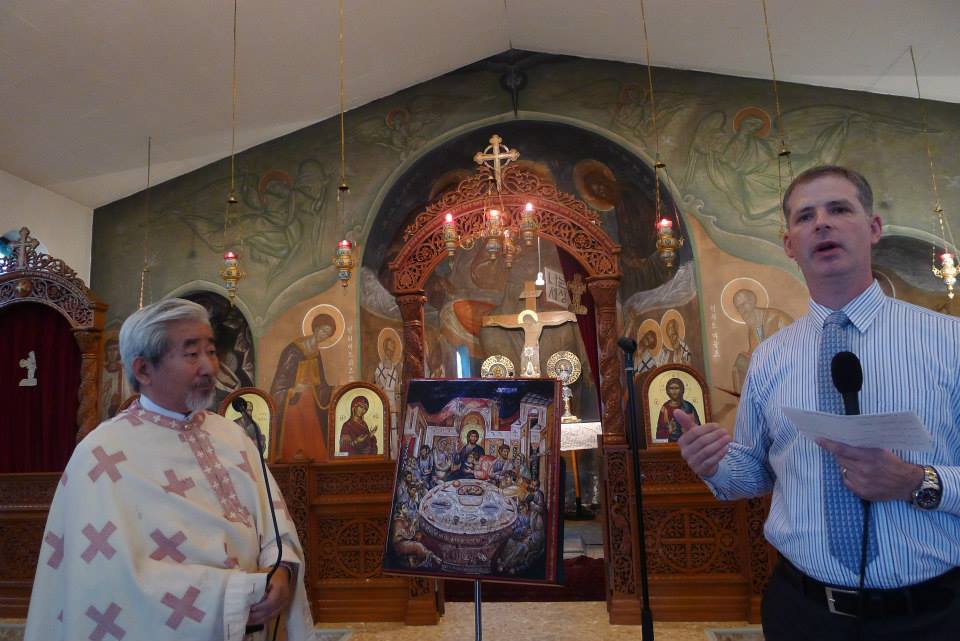
|
 St. Paul Orthodox Press St. Paul Orthodox Press
www.orthodoxincheon.or.kr
|
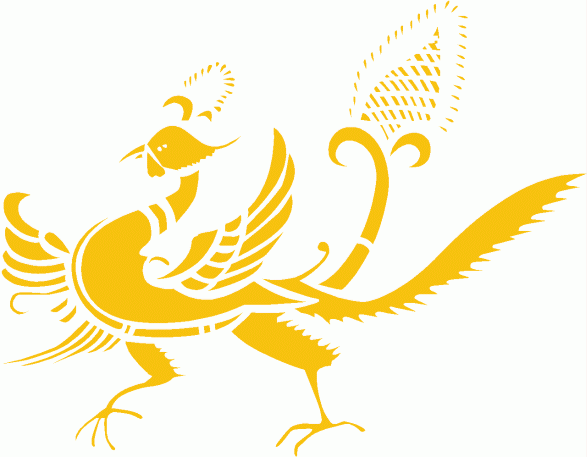
|




